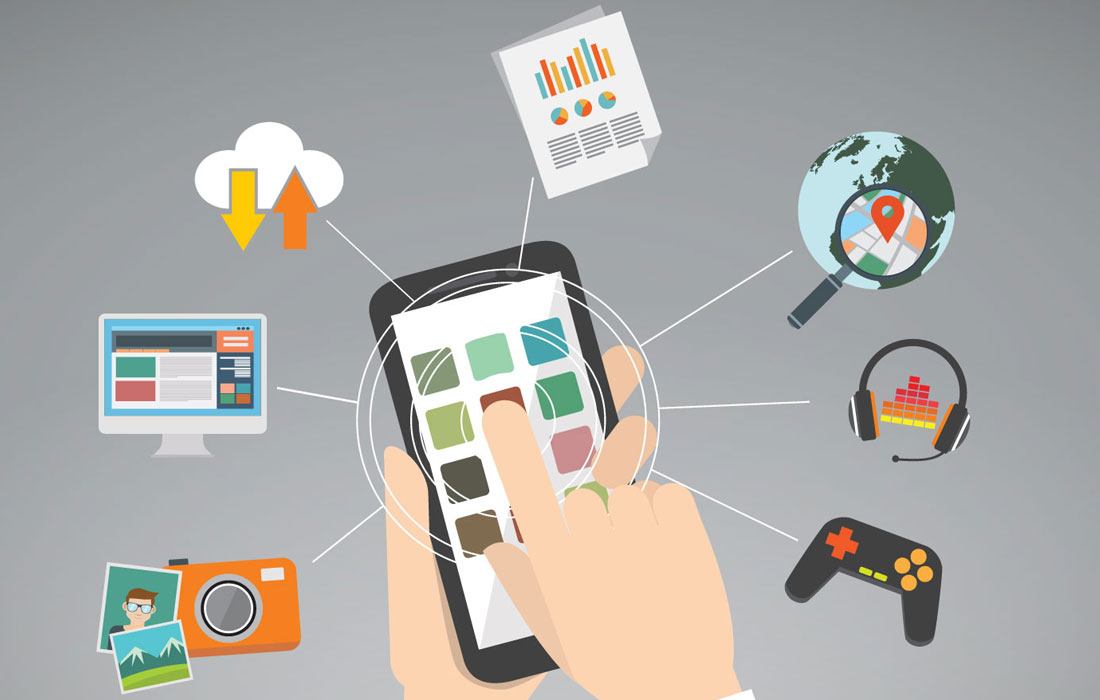Mobile Developments
Contact with us for any advice
Call Anytime
+ 1 214-235-7831
Mobile app development is the process used to create software for smartphones, tablets, and mobile devices. The overall process includes writing code to create the software and designing the app.
App development is similar to other software development, including web apps. But the biggest difference between app development and traditional software development is the ability for mobile apps to use native features on a device.
For example, apps can leverage mobile features like GPS, Bluetooth, a camera, microphone, and other functions that are pre-built into a smartphone.
Apple and Android apps dominate the global market share for mobile apps. So while it’s possible to create apps for other platforms, most apps target these two markets.
It’s also worth noting that there are several different app development frameworks to choose from. So you’ll have lots of options to consider, which we’ll cover in greater detail throughout this guide.
Before you start any software development, you must first brainstorm your ideas. Some of you might already have a basic idea or concept. Others might be starting from scratch.
Here are some helpful starter questions that you should be asking yourself:
- What do you want your mobile app to accomplish?
- What are your app goals?
- What problem (or problems) will your app solve for customers?
- What features will your app include?
- How much money are you willing to invest?
- How will you develop the app? (In-house team, agency, app builder, etc.)
It’s easy to get carried away during the brainstorming process. But it’s really important to stick to the app’s core features. Forget about unnecessary add-ons or “nice-to-haves” that deviate from the app’s primary function.
The mobile app design process is another crucial part of the process. Start thinking about how your app will look and feel. Start drawing some sketches and create wireframes to see how the app will work.
Focusing on the user experience must be a top priority. You need to make sure the user interface is seamless and easy to navigate.
- Create a storyboard or roadmap to demonstrate connections between each screen.
- Think about the differences in how people will use your app compared to a mobile website (app development and web development are not the same).
- User experience must be your top priority.
You’ll want to create some prototypes of the app based on your wireframes before you start to build a fully-functional app. From here, you can create an MVP (minimum viable product). This is a bare-bones app that achieves its primary goal without all of the bells and whistles.
Now it’s time to actually create the app. This includes all of the back-end technology, APIs, and front-end building. Here’s what you need to do:
- Choose your development method.
- Assemble your development team.
- Appoint a project manager.
- Establish a timeline with milestones and goals.
- Be agile, and prepare for changes along the way.
Depending on your development method, you might need to build two separate versions of the app—one for iOS and one for Android. Alternatively, you can use cross-platform development tools to create a single version of the app that works on both operating systems.
This process will look a bit different for everyone. Some apps can be built in a month with a single developer. Others can take six months or a year with multiple developers.
The type of app you’re building and the complexity of its features have a significant impact on the timeline and budget for app development. A simple app with basic features should be quick and affordable to build. But a complex app that needs user authentication servers, GPS capabilities, real-time communication between users, and other similar features will obviously take a bit longer to develop.
Before your app goes live, you need to make sure that it actually works. App testing is when you’ll find bugs, glitches, and anything else that needs to be cleaned up before it gets put in the hands of your customers.
- Testing your app with QAs throughout the development process is the best approach.
- Make sure you test the app on both platforms.
- Test the app on different devices (smartphones, tablets, etc.).
- Run tests with real users to gather feedback and make improvements.
No app is perfect. The purpose of your testing is to put out a functional app that works without crashing so users can enjoy the experience.
You can also make updates to your app and release new versions later on. But trying to make sure the app is perfect during the testing phase could mean your app never gets to market. So don’t be too hard on yourself, and just try to put out a solid product.


